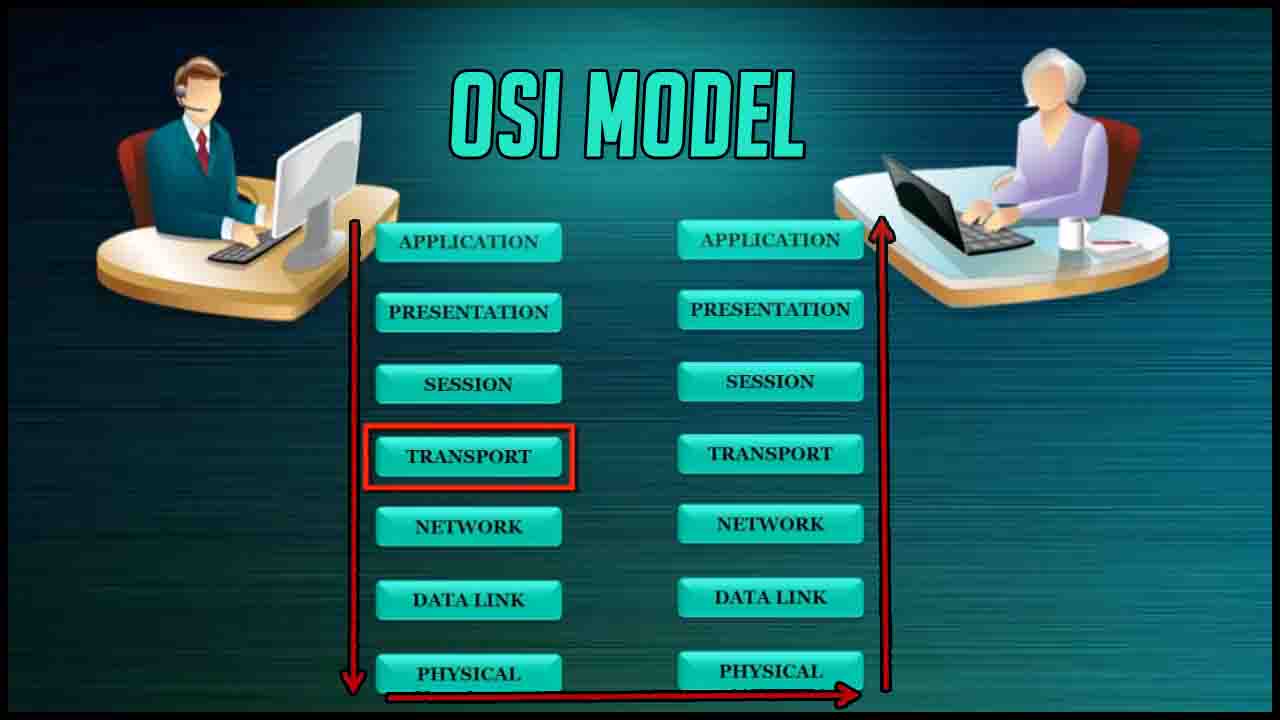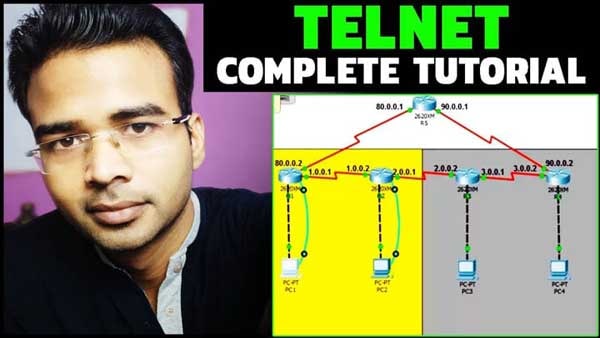Open System Interconnection (OSI) Model developed by the International Standards Organization (ISO) describes the flow of information from one computer to another. OSI model is also called ISO OSI Reference Model. Here is the functions of seven layers of OSI Reference Model.

There are seven layers in OSI Model:
Application Layer
Presentation Layer
Session Layer
Transport Layer
Network Layer
Data Link Layer
Physical Layer
Functions of Seven Layers of OSI Reference Model
Physical Layer
Physical layer is the first or the bottom most layer of the OSI model where all the physical connectivity of devices takes place in a network. It also defines the electrical and mechanical specifications like cables, connectors and signaling options of the medium. It converts the data into binary bits and then transfer to data link layer.
Functions of Physical Layer:
- Characteristics of media – Defines the characteristics of the interface which is used for connecting the devices. It also defines the type of the transmission media such as copper wires or fiber optic cables.
- Encoding – Defines the encoding type. Encoding means changing bit stream. Before transmission, physical layer encodes the signal into electrical or optical form depending upon the media.
- Transmission Rate – Defines the transmission rate of bits. This provides number of bits transmitted per second. It defines how long will the duration of a bit be.
- Transmission Mode – Defines the transmission mode between two devices. Transmission mode specifies the direction of signal flow. The different types of transmission modes are simplex, half duplex and full duplex.
- Topology – It is a pattern which defines how devices are get connected in a network. Different types of network topology are: Single Node, Ring, Bus, Mesh, Tree and Hybrid Topology.
Data Link Layer
Data link layer is the second layer of the OSI Model. It converts bits received from physical layer into frames and then transfer it to the network layer.
Functions of Data Link Layer:
- Framing – The physical layer delivers raw bits from the Source to destination. During transmission, the value of the bits can change. It is also possible that the number of bits received by the receiver may be different from the number of bits sent by the Sender. To resolve this problem, the data link layer organizes the bits into manageable data units called as frames.
- Physical Addressing – Data link Layer adds header to the frame which contains the physical address of the sender (MAC Address)or receiver.
- Flow Control – It may happen that the speed at which the sending and receiving nodes operate may differ. The sending node may transmit data at a faster rate but the receiving node may receive it at a slower rate. The rate of data transmission between two nodes should be controlled to keep both the nodes in synchronization. This process is called flow control.
- Error Control – Another function of the Data Link layer is error control. Error control detects and corrects errors. During transmission, if a frame is lost or corrupted, the data link layer re transmits that frame. It also prevents duplication of frames.
Network Layer
This is the third layer of the OSI model. It converts the frame received from data link layer into packets and then transfer it to the transport layer.
Functions of Network Layer
- Logical Addressing – The data link layer provides physical addressing which is useful for a local network. When the packet is designed for a device outside the network, we require other addressing scheme to identify source and destination. Network layer adds header to the data that includes the logical address (IP address) of the source and destination. It is a 32-bit address that uniquely identifies the device connected to the network.
- Routing – It defines the proper path of a packets to reach in its correct destination. Routing can be of two types, static or dynamic.
- Handling Congestion issues – Any given network has a certain capacity to deliver or handle number of packets. When the packets exceed the handling capacity then the lots congestion occurs. It is the responsibility of the network layer to control such congestion problems.
- Inter-networking – Inter-networking means connecting two or more computer networks together. The Internet is the best example of inter-networking. There are different types of networks that exist in the real world such as LAN, MAN and WAN.
Transport Layer
Transport Layer is the fourth layer of the OSI model. It convert the packets received from network layer into segments and then transfer it to the upper layer. The transport layer ensures that the entire message reaches in order and handles error control and flow control at the source-to-destination level.
Functions of Transport Layer
- Connection Control: Transport layer provides either connection-oriented or connection-less service.
- Flow Control – Data link layer provides flow control of data across a single link.
- Error Control – Transport layer also performs error checking. It confirms that data reached to the destination without an error.
Session Layer
This is the fifth layer of the OSI model. This layer establishes, manages, synchronizes and terminates connection between the computers. It provides either half duplex or full duplex service.
Functions of Session Layer:
Dialog Control – The session layer is responsible for setting up sessions between devices. It allows two devices to enter into dialog (communication process). These dialogs can take place either in half-duplex or full duplex mode.
Synchronization – At the session layer, checkpoints (synchronization bits) are added into a stream of data to synchronize the sessions. For example, if a device is sending a file of 1000 pages, then you can insert checkpoints after every 100 pages to ensure that these 100 pages are received without an error and acknowledged independently. If an error occurs while transmitting page 631, the only pages that should be retransmitted are from 601 to 631. Previous pages need not be resent.
Presentation Layer
This is the sixth layer of the OSI model. This layer deals with syntax and semantics of the data exchanged between two devices. It encrypt data to protect from unauthorized access and also compress to reduce the size of data.
Functions of Presentation Layer
- Encryption – Presentation Layer encrypt the data before it passes to the session layer. Encryption is a process of converting a readable data into unreadable format so that it can protects the information from unauthorized access. On the receiver side, presentation layer is going to decrypt data in the readable format and passes it to the application layer.
- Compression – Presentation layer compress data in less number of bits (reduce the size of data) So that, it can travel in the network fast with consuming less space. It is important while transmitting multimedia information such as text, audio and video.
Application Layer
Application Layer is the seventh layer of the OSI model. It provides a means for the user to access information on the network using an application. It also supports services such as electronic mail, remote file access and transfer and shared database management.
Function of Application Layer
- Network Virtual Terminal – It is a software version of physical terminal. It allows the user to login to the computer remotely connected in the network.
- File Transfer Access and Management (FTAM) – It helps user to access files in a remote computer and make changes. User can directly edit the file in the remote computer or they can download it into their local computer.
- Mail Services – It helps in e-mails forwarding to another device over the internet.
Here is a short video on the functions of seven layers of OSI Reference Model
Summary of the functions of Seven Layers of OSI Reference Model:
- Physical Layer converts the data into binary bits and then transfer it to the data link layer.
- Data Link Layer converts the binary bits into frames and then transfer it to the network layer.
- Network Layer converts the frames into packets and then transfer it to the transport layer.
- Transport Layer converts the packets into segments and then transfer it to the upper layer.


